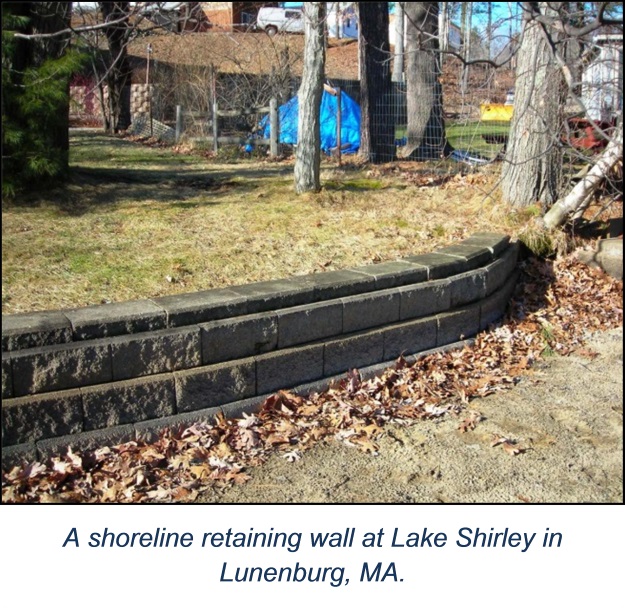Soil Retention

Description
Soil retention measures are structures or practices that hold soil in place or keep it contained within a site boundary. They include grading or reshaping the ground to lessen steep slopes or shoring excavated areas with wood, concrete, or steel structures. Some soil-retaining measures are used only for erosion control, while others are also used to protect workers during excavation projects.
Applicability
Assess site conditions before breaking ground and, where possible, reduce steep slopes by grading. When sites have very steep slopes or loose, highly erodible soils that cause other methods, such as chemical or vegetative stabilization or regrading, to be ineffective, use reinforced soil-retaining structures. As much as possible, maintain the preconstruction drainage pattern.
Siting and Design Considerations
Examples of reinforced soil retaining structures include:
- Skeleton sheeting. An inexpensive soil bracing system that consists of construction grade lumber used to support the excavated face of a slope. This method requires the soil to be cohesive.
- Continuous sheeting. Involves using a material, such as face-steel, concrete, or wood, to cover the entire slope continuously, with struts and boards placed along the slope to support it.
- Permanent retaining walls. Walls of concrete masonry or wood that are left in place after construction is complete to provide continued support of the slope.
The proper design of reinforced soil-retaining structures is crucial for erosion control and safety. To ensure safety of the retaining structure, have a qualified engineer design it--one who understands all the design considerations, such as the nature of the soil, location of the ground water table, and the expected loads. Ensure that hydraulic pressure does not build up behind the retaining structure and cause it to fail.
Limitations
To be effective, design soil-retention structures to handle expected loads. Heavy rains can damage or destroy these structures and result in sediment inputs to waterbodies. The structures must be properly installed and maintained to avoid failure.
Maintenance Considerations
Inspect soil-stabilization structures periodically, especially after rainstorms, to check for erosion, damage, or other signs of deterioration. Repair any damage to the actual slope or ditch, such as washouts or breakage, before reinstalling materials for the soil-stabilization structure.
Effectiveness
Soil-retention structures, if properly designed and installed, can effectively prevent erosion in areas with steep slopes and erodible soils. The potential for failure depends on the design, installation, and maintenance of the structures, and the likelihood of catastrophic events such as heavy rains, earthquakes, and landslides.
Cost Considerations
If planned appropriately, slope reduction can be accomplished during site development with minimal additional cost. Soil stabilization structures can be expensive because they require a professional engineer to develop a design (estimated to be 25 to 30 percent of construction costs [Ferguson et al., 1997]). Depending on the size of the proposed structure and the relief of the surrounding area, excavation and installation costs can be high. Capital costs include mobilization, grading, grooving, tracking and compacting fill, and installing the structures. Labor costs for regular inspection and repairs are also a consideration.
References
Fergusen, T., R. Gignac, M. Stoffan, A. Ibrahim, and J. Aldrich. 1997. Rouge River National Wet Weather Demonstration Project: Cost Estimating Guidelines Best Management Practices and Engineered Controls. Rouge River National Wet Weather Demonstration Project, Wayne County, MI.
USEPA (U.S. Environmental Protection Agency). 1992. Stormwater Management for Construction Activities: Developing Pollution Prevention Plans and Best Management Practices. EPA 832-R-92-005. U.S. Environmental Protection Agency, Office of Water, Washington, DC.
Virginia Department of Conservation and Recreation. 1995. Virginia Erosion & Sediment Control Field Manual. 2nd ed. Virginia Department of Conservation and Recreation, Division of Soil and Water Conservation, Richmond, VA.